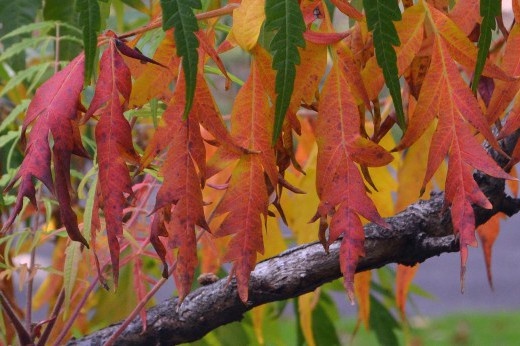For years fescues languished as obscure players in the turfgrass pantheon, relegated to second-class status as components of shade-tolerant seed mixtures. These attractive, fine-textured grasses are finally coming into their own. Read Low & Slow Fescues
Plants & Gardens Blog
Native Flora
-
Native FloraSustainable Gardening
Low & Slow Fescues
-
Native FloraPlant Choices
Native Azaleas
North American azaleas have soft-colored blooms and loose, natural-looking growth habits. Some species bloom in summer and even early fall, and many have colorful autumn foliage. Read Native Azaleas
-
Pollinators and BirdsNative Flora
Milkweeds—Easing the Plight of the Monarch Butterfly
Modern agriculture has made much of the U.S. farm belt inhospitable to Monarchs. In the East, industrial, commercial, and residential land use is gradually effacing the habitat that supports them. This is where gardeners come in. We can make a big difference by growing the plants that are most important to the lifecycle of the Monarchs—milkweeds.
Read Milkweeds—Easing the Plight of the Monarch Butterfly -
Pollinators and BirdsNative Flora
Bumble Bees—The Essential, Indefatigable Pollinators
We live on a planet pollinated primarily by bees. Bees fertilize most of our favorite flowers, and pollinate a third of the plants we eat. They are also the exclusive pollinator of several rare and imperiled wildflowers, including native monkshoods and lady's tresses orchids. Without these essential insects, farm productivity would plummet and wildflowers would become extinct. In short, bumble bees and other bees are essential for our own well being and the survival of a good deal of the world's biodiversity. Read Bumble Bees—The Essential, Indefatigable Pollinators
-
Native FloraPlant Choices
Wildflower Fever!—A Selection of Unusual Natives
Nowadays, I fill my garden with beautiful wildflowers. Besides increasing biodiversity in and of themselves by augmenting the shrinking populations and gene pools of native species, they provide a valuable source of food for insects and birds. Read Wildflower Fever!—A Selection of Unusual Natives
-
Pollinators and BirdsNative FloraPlant Choices
Cardinal Flower—Spectacular Scarlet Blossoms That Hummingbirds Adore
In the early fall, as you approach the edge of a woodland stream or the banks of a secluded pond, you may glimpse a flash of red. This spark of scarlet is from what may be the most brilliant of our native blossoms, the cardinal flower. Read Cardinal Flower—Spectacular Scarlet Blossoms That Hummingbirds Adore
-
Pollinators and BirdsNative FloraPlant Choices
Cutleaf Staghorn Sumac
This native shrub is known for its gorgeous foliage. It's easy to grow and produces distinctive flowers and pretty winter berries. Read Cutleaf Staghorn Sumac
-
Native FloraPlant Choices
False Indigo—A Spectacular Native Hybrid
With the growing interest in and study of native plants, some forgotten ones are being reexamined for garden worthiness and occasionally a new selection of a native species is introduced. Such is the case with Baptisia 'Purple Smoke' or 'Purple Smoke' false indigo. Read False Indigo—A Spectacular Native Hybrid





